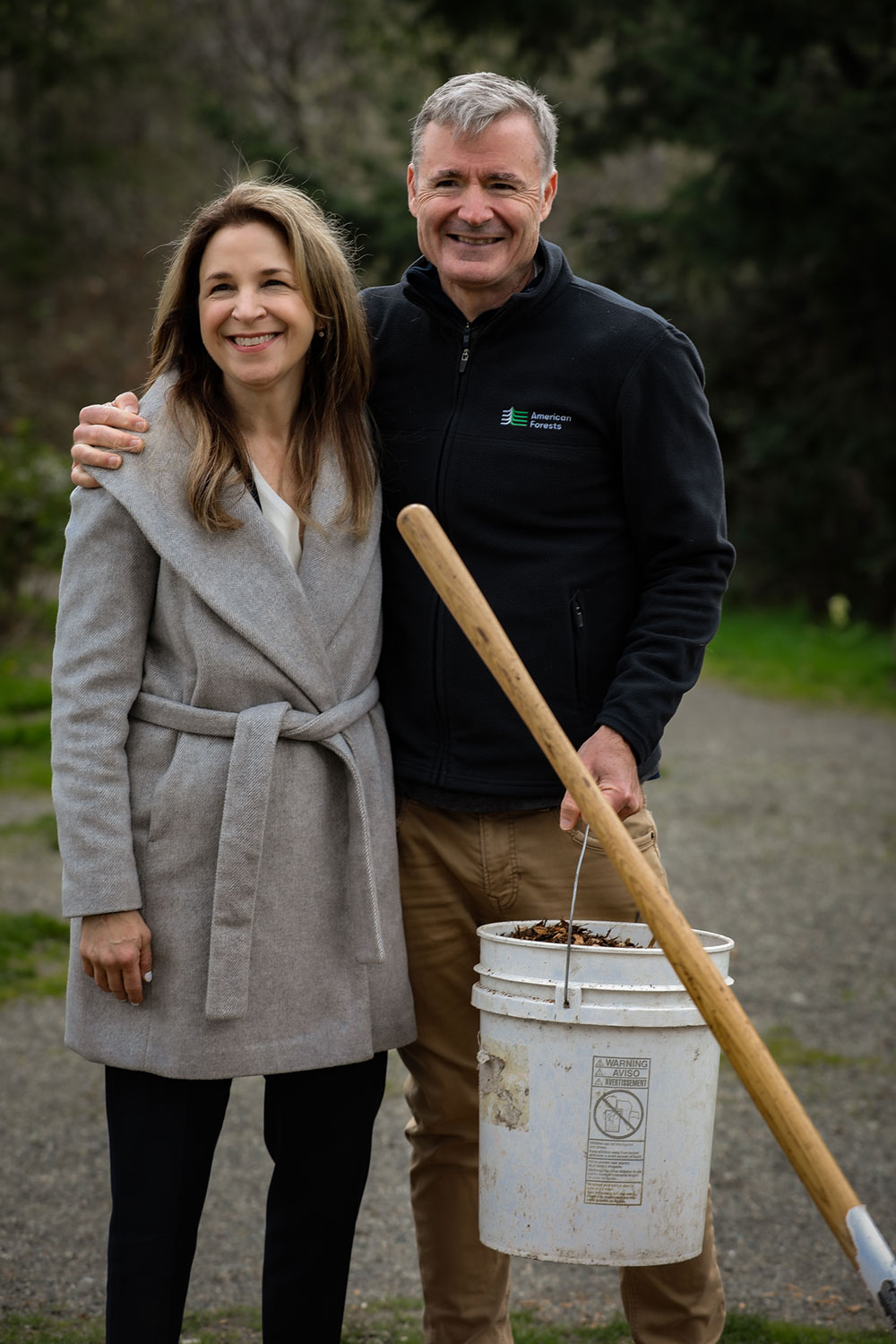
Photo Credit: Rachel Terlep / Washington State Department of Natural Resources
WHEN SEATTLE hosted the 1962 World’s Fair, it showcased America’s aspirations for the Space Age. More than 60 years later, Washington’s largest city was again the stage for the launch of another moonshot: achieving Tree Equity in the Evergreen State.
In 2021, a heat dome boosted temperatures in the area more than 30 degrees above average — a death sentence for some who lacked air conditioning and heat resilience. Low heat resilience can be magnified by insufficient tree canopy, and many of the more than 400 deaths attributed to the heat dome occurred in areas with not enough urban trees to make a difference.
According to American Forests’ Tree Equity Score tool, nearly 85% of urbanized neighborhoods in Washington have inadequate tree cover. More than 2 million people have less than half the tree canopy needed to support the needs of their neighborhood. The City of Seattle assessed its urban trees and reported a net loss of 255 acres of tree canopy since 2016.
State and local leaders recognized the need for urgent action to increase tree canopy equitably and save lives in the future. With a shared ambition to boost Tree Equity in disadvantaged neighborhoods disproportionately suffering the negative effects of extreme heat, American Forests and the Washington State Department of Natural Resources gathered in April at Seattle’s Roxhill Park to announce the launch of the Washington State Tree Equity Collaborative — the first statewide commitment to elevate Tree Equity Scores.
“We’re going to collaborate to help build rigorous and inclusive urban forestry programs,” Washington State Commissioner of Public Lands Hilary Franz told the crowd over children’s shouts and laughter from the nearby playground. “It’s not just about planting new trees. We must protect existing tree canopy as well. And that means developing a workforce…to advance equity.”
Tree Equity Collaborative members make multiple commitments: to use the best available data and science (including American Forests’ Tree Equity Score) to evaluate areas in greatest need of tree canopy cover; to seek funding and resources toward maintaining and increasing tree canopy cover in areas of greatest need, with a focus on equitable distribution; and to develop a collective action plan to support a measurable improvement in Tree Equity in Washington’s cities by 2030.
Among the first to sign pledges to join the Collaborative were Seattle Mayor Bruce Harrell, Tacoma Mayor Victoria Woodards, the Carl Maxey Center in Spokane, the 300 Trees organization in Bellevue and the Duwamish Alive Coalition. Mayor Harrell announced Seattle’s plans to develop a Tree Canopy Equity and Resilience Plan, implement a policy that requires trees be planted for every site-appropriate tree that is removed from city property, and plant 8,000 trees on both public and private properties as well as an additional 40,000 trees in parks and natural areas. The plans also include performing important maintenance on 40,000 trees across the city.
In May, the city of Yakima received a $20,000 grant from the Washington State Department of Natural Resources to develop an urban forest management plan, building momentum as the group grows in strength and shared ambition.
As unprecedented resources for urban and community forestry are allocated to cities, states and nonprofits across the country, opportunity abounds. “We can all have the life-giving benefits of trees on a daily basis,” said American Forests President and CEO Jad Daley during the Collaborative launch. “We’re going to make it happen in Washington State, and we’re going to lead the country and the world on how to get this done with the right kinds of partnerships.”